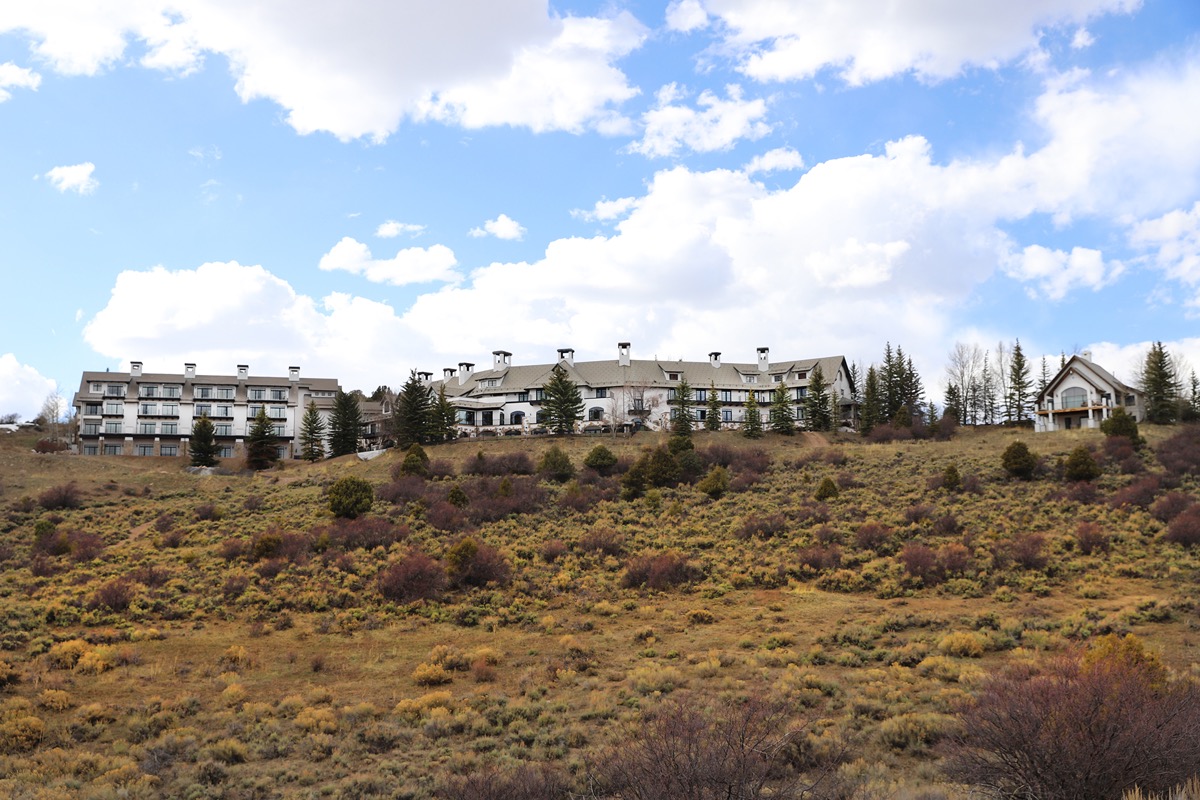Learn / Building Community in Rehab
Building Community in Rehab


November 22nd, 2021| Clinically Reviewed by
Substance use disorders can be extremely isolating. These conditions are often related to difficult relationships with family, friends, or colleagues. In some cases, challenging relationships encourage unhealthy behavior. On the other hand, even the healthiest of dynamics can be undermined by untreated mental health concerns. In both cases, many people find that building community is an important part of recovery. This process can begin during residential rehab.
When you first enter inpatient treatment, you may be struggling with the idea of community. During your time there, you can work on your interpersonal skills and begin to define or redefine what social support means to you. Different facilities take various approaches to this aspect of healing. You may be getting to know a cohort of your peers, staying in touch with far-away loved ones, attending groups, or all of the above. Whatever therapeutic modalities you use, you’ll likely learn how to relate to the people around you in a healthier way.
The Impact of Substance Use Disorders on Relationships
Your illness is not your fault. It’s all too easy to blame yourself for factors outside of your control, including genetic predispositions and traumatic life experiences. No matter what, you are not to blame for simply having a substance use disorder. That being said, you can choose to change your behavior in ways that will make your relationships more sustainable. It can be very challenging to make those changes. But, with appropriate support, it is possible.
There is a complex association between social support and substance use disorders. For some clients, substance misuse feels like a solution to social isolation.1 On the other hand, previously healthy relationships may deteriorate when a person develops a substance use disorder. This often results in unsustainable social dynamics and interpersonal strife. Depending on how your community is structured, these difficulties may play out in a number of ways.
Family Dynamics

Research has established that substance use disorders strongly impact immediate family members.2 Spouses and children, in particular, may experience psychological effects. This can result in codependent relationships, in which one partner tries to support a person with a substance use disorder, but unintentionally enables them instead.
If your family is struggling with issues like these, it’s important to focus on how you can heal, both individually and as a group. Family therapy may be especially beneficial here. Reconnecting with your loved ones may have a direct impact on the outcome of treatment. Research has found that “family support in the intervention process3…contributes to a higher rate of recovery success among addicts.”
Substance-Based Relationships
According to one study, “individuals with a substance use disorder (SUD) often have fewer social support network resources than those without SUDs4…these findings suggest that, to reach and maintain abstinence, it is important to maintain positive relationships and to engage self-agency to protect oneself from the influences of negative relationships.”
When you first begin healing—and especially if you start by attending inpatient rehab—you’ll probably take a break from certain relationships. And if there are people in your life who actively interfere with your recovery, your break from them might be permanent. One expert writes that even “thinking about people, places, and things associated with past [substance] use” may be associated with relapse.
As beneficial as it can be to let go of toxic dynamics, it can also be painful. Residential rehab can provide a buffer during this process. If you attend an inpatient program, you’ll be surrounded by trained professionals who have experience helping clients navigate this type of grief. In some programs, you’ll also be able to build relationships with the other people in your cohort.
Finding Comfort in Peer Support

At most residential rehab facilities, you’ll be in recovery alongside a group of your peers. Some rehabs have an especially strong focus on these relationships. The Hope House Scottsdale, for example, hosts no more than ten clients at a time. Brenna Gonzales, Clinical Director, describes this environment as “a tight-knit community.” These settings give you more time with your providers and may foster stronger relationships between clients themselves. And there are numerous ways to build relationships during inpatient treatment.
Group Therapy
In a group therapy setting, you’ll have the opportunity to talk about your emotional experience in a protected environment. Some modalities encourage clients to speak directly to each other, offering insight and support during the session. And even if you’re instructed not to discuss much of your personal history during therapy—as is true in dialectical behavior therapy—you may still develop an emotional connection to the people around you.
Support Groups
Although more research is needed, “peer support groups included in addiction treatment5 show much promise in potentially reducing substance use.” Some programs include 12-Step groups, such as A.A. or N.A. Others offer non-12-Step support groups that serve a similar purpose, with a slightly different philosophy. Most of these groups are designed to help you connect with those who have similar life experiences. You may find that the people in your group can offer insights you simply wouldn’t reach in more traditional talk therapy.
Experiential Therapy

In experiential therapy, clients engage in a wide variety of activities, from skiing to visiting museums. Along with other therapeutic benefits, these experiences allow you to practice interpersonal skills in a new setting. For example, if you and your cohort go through a ropes course together, you may learn valuable lessons about communication, trust, and how to take risks in a healthy way.
Healing Past Relationships
Not every rehab will connect you with a cohort. Some facilities offer individual treatment, serving only one person at a time. This can be very important for well-known clients, who may require high levels of discretion in order to effectively begin healing. However, healing in private does not mean healing in isolation. These programs are extremely personalized, with treatment plans tailored to meet the unique needs of each individual client. Sometimes, that means staying in touch with your family, loved ones, and even your colleagues during treatment.
Family Therapy
Many rehab centers offer family therapy. “Family” may be defined in many ways, including people such as parents, children, partners, dear friends, and chosen family members. If this modality is right for you, you may participate in regular sessions, either in person or online. Some facilities also offer support groups that are only for family members, helping them heal from adverse experiences related to a loved one’s substance use disorder.
Family therapy isn’t right for everyone. Some clients may even decide to cut ties with family members to focus on recovery. There is no right or wrong way to approach this; only the way that works best for you. It’s important to remember that you get to decide who is part of your community. And if your family is included in that, they may be a valuable source of support both during and after rehab.
Forming a Sober Support Network
Recovery doesn’t end when you leave rehab. At this stage, you’ll find yourself in a new environment, and therefore, within a new community. This community may be made up of your family and old friends, or it may be something you haven’t experienced before.
For example, before returning home, you may choose to spend time in a therapeutic (or sober living) community. These programs provide less structure than inpatient rehab, while still supporting a healthy lifestyle for people with substance use disorders. These environments can be helpful for people who do not have strong support networks to return to. As one expert writes about the value of community in recovery,6 “Individuals with substance abuse problems who are living in a collaborative housing setting will have their addiction treated more effectively than [those] not residing in a community-based facility.”
If and when you do return home, community will continue to be important. You may find support from 12-Step or similar support groups, which will allow you to connect with peers in your area. Many rehab programs also have strong alumni programs, through which you can stay connected with your cohort.
And as important as these programs are, they aren’t everything. After rehab, you’ll also start to create a life that feels rich and meaningful, without relying on substance use. You may engage in new hobbies, meet people with similar interests, and find healthy ways to have fun. This may sound frivolous, but in fact, it is an absolutely essential part of recovery. Research has shown that “increasing recovery-supportive social connections can have a profound benefit for achieving and maintaining abstinence.”7
The Effect of Community Support on Long-Term Recovery
When considering the importance of community for people recovering from substance use disorders, many researchers refer to a study conducted in the early 1980s, commonly known as “Rat Park.”8
In his study, researcher Brian Alexander began by giving rats free access to water laced with opiates. He found that when given a choice between plain water and drugged water, solitary rats would continue drinking the opiate solution until they overdosed. Another group of rats was placed in an enclosure he called Rat Park. As it was later described by journalist Johann Hari, this environment was “basically heaven for rats. They’ve got loads of cheese, they’ve got loads of colored balls, they’ve got loads of tunnels. Crucially, they’ve got loads of friends.” Faced with the same choice between drugged and pure water, none of the subjects in Rat Park overdosed.
This research paints a clear picture. When a subject’s needs for food, enrichment, and— perhaps most importantly—community are met, then they’re able to create healthier habits. In light of this, it is absolutely essential for people with substance use disorders to build strong support networks.9
The Rat Park experiment is not without flaws.10 Some experts critique it as an oversimplification. And indeed, this theory of substance misuse focuses only on the idea of a subject’s current environment. It ignores genetics, life history, and the effects of long-term stress, all of which can contribute to a person’s mental health. However, more robust research continues to support one of its findings: that strong communities can help guard against substance misuse.
One study, conducted in 2021, analyzed several social factors as potential risk and protective factors for substance misuse.11 Researchers found that “those with a greater number of close friends had more strengths and fewer barriers” to addiction recovery. This suggests that one’s relationships, and not just one’s environment, support the process of healing.
Recovering Your Relationship With the World Around You
Much like the process of recovery, building community takes time. Many clients enter rehab with much to learn about how to engage in healthy relationships. You may need to practice setting boundaries, expressing your needs, or navigating group dynamics. And as much progress as you might make during rehab, you’ll find yourself learning a whole new set of skills after treatment.
Remember that a strong community is more than a checkbox. It is a complex, living, breathing, changing group of people, all of whom relate to each other in unique ways. And as you reconsider your relationship with substances, you may also redefine what you need in your relationships with other people. Your support network might look very different after rehab than it did earlier in your life. And for some people, that can be extremely healthy.
To learn more about the ways different facilities foster community, browse our list of luxury rehab centers.
Frequently Asked Questions About Building Community in Rehab
Why is building community important in the rehab process?
Building community in rehab fosters support, connection, and a sense of belonging. It creates a safe environment for patients to share experiences, offer encouragement, and learn from each other. Strong interpersonal relationships help support the healing process.
What are the benefits of peer support in rehab?
Peer support in rehab offers several benefits:
• Fosters mutual understanding and empathy
• Enhances motivation and accountability
• Creates a sense of shared journey
• Provides inspiration
• Reduces feelings of isolation
• Increases the likelihood of long-term recovery
How is community built in rehab?
Community is built in rehab through various activities including group therapy, support groups, experiential therapy, outings, and shared responsibilities. These activities promote social interaction, communication, and collaboration. They foster a supportive environment for people to share and learn from one another.
Return to Resource Library
Our Promise
How Is RehabPath Different?
We believe everyone deserves access to accurate, unbiased information about mental health and addiction. That’s why we have a comprehensive set of treatment providers and don't charge for inclusion. Any center that meets our criteria can list for free. We do not and have never accepted fees for referring someone to a particular center. Providers who advertise with us must be verified by our Research Team and we clearly mark their status as advertisers.








